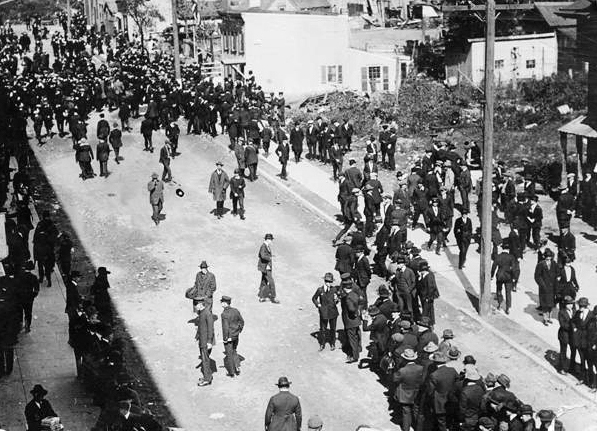
The construction of the massive, 70,000-seat Cleveland Municipal Stadium in the 1930s spelled the beginning of the end for a much older stadium— League Park. This ballpark was constructed in 1891 east of downtown in Cleveland's Hough neighborhood at Dunham Street (East 66th) between Linwood and Lexington Avenues. Lexington Avenue trolley-line operator Frank Robison shoehorned the ballpark into the residential neighborhood, conveniently generating revenues from fares and game tickets. Its tight quarters and restrictive right-field fence to fit the property gave rise to “pinball” baseball, leaving outfielders never knowing where the ball would ricochet. Close-by homes featured signs advertising local businesses for home-run promotions. Despite renovations in 1910 that replaced the original wood with concrete and steel, expanding capacity to over 20,000, League Park was deemed to be too small and antiquated for professional baseball after Municipal Stadium opened.
League Park began its run as the home of the Cleveland Spiders who became the Indians in what was the site of the 1920 World Series, in which the Indians beat the Brooklyn Dodgers for their first championship. From 1916 to 1927, as a perquisite of owning the team, Jim Dunn changed the name to Dunn Field, but thereafter the name reverted to League Park. Negro League baseball teams also thrived at League Park from the mid-1930s, culminating with the Cleveland Buckeyes winning the the Negro American League World Series in 1945. The Indians played their last game at League Park in 1946, but for ten years prior to that they had been playing weekend and holiday games at the bigger stadium on the lakefront. During its heyday, the Park hosted MLB’s best—manager Tris Speaker, hitter Ty Cobb, slugger Babe Ruth, Lou Gehrig, infamous shoeless Joe Jackson, shortstop Ray Chapman, and champion Bob Feller, among others. Joe DiMaggio finalized his 56-game hitting streak at the Park in 1941; the streak ended the next day at Muny Stadium. The Indians initially achieved success after departing League Park, but the team's fortunes soon declined. The last thirty years or so of the Indians' tenure at Municipal Stadium were marked by losing seasons and tens of thousands of empty seats until their move to Jacobs Field in the mid-1990s and re-emergence of winning ways.
Though usually remembered for baseball, League Park also hosted a wider variety of sporting events. In the second and third decades of the 20th century, boxing drew crowds in the mild weather months to see Clevelander Johnny Kilbane defend his titles at the Park. Local high school football first appeared at the Park in 1896 when Central High met University School in a championship contest. More games were hosted over the years, including several Thanksgiving Day games between Cathedral Latin and St. Ignatius. College football also came calling to the facility between 1920 and 1949. The Big Four League of Western Reserve, Case Tech, John Carroll, and Baldwin Wallace used League Park regularly, hosting visiting teams from Ohio State, Ohio U., and others. The 1945 NFL champion Cleveland Rams, the last of a series of Cleveland professional football teams predating the Browns, also called League Park home between 1916 and 1950. Much of the stadium was demolished in 1952, when the site became a public park. However, a few remnants, including the baseball diamond itself, still stand today.
In 2002 the last of the grandstand structure was demolished. Cleveland city councilwoman Fannie Lewis mobilized local interest in capturing and preserving memories of the glory days of the stadium, and in revitalizing the surrounding neighborhood. Osborn Engineering, the firm that managed the 1910 refurbishment, provided design work for a renewed League Park recreation area. The Baseball Heritage Museum has been located at League Park since 2014. The Museum is dedicated to preserving the artifacts and stories of baseball’s past with a special focus on diversity in the sport; the stories of challenge and triumph intrinsic in the stories of the Negro Leagues and other underserved demographics in the sport. “General programming, youth educational offerings, community outreach and other initiatives are driven by the rich repository of life lessons in these stories. The Museum is also a driver of Cleveland’s sense of place, by continuously working to become a center of neighborhood life and a destination location for baseball and history lovers from across the city and across the country.”
Video
Audio
Images












